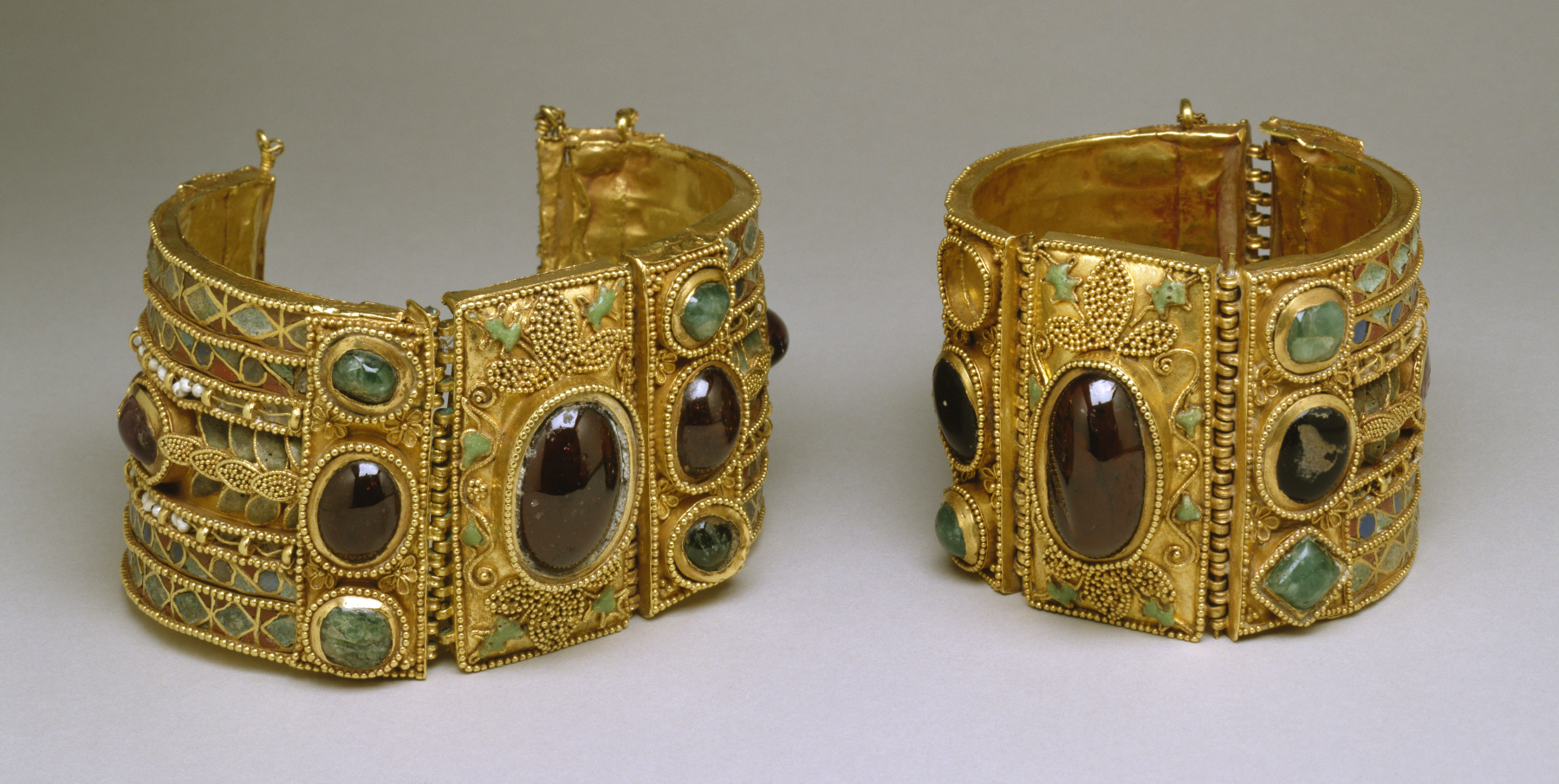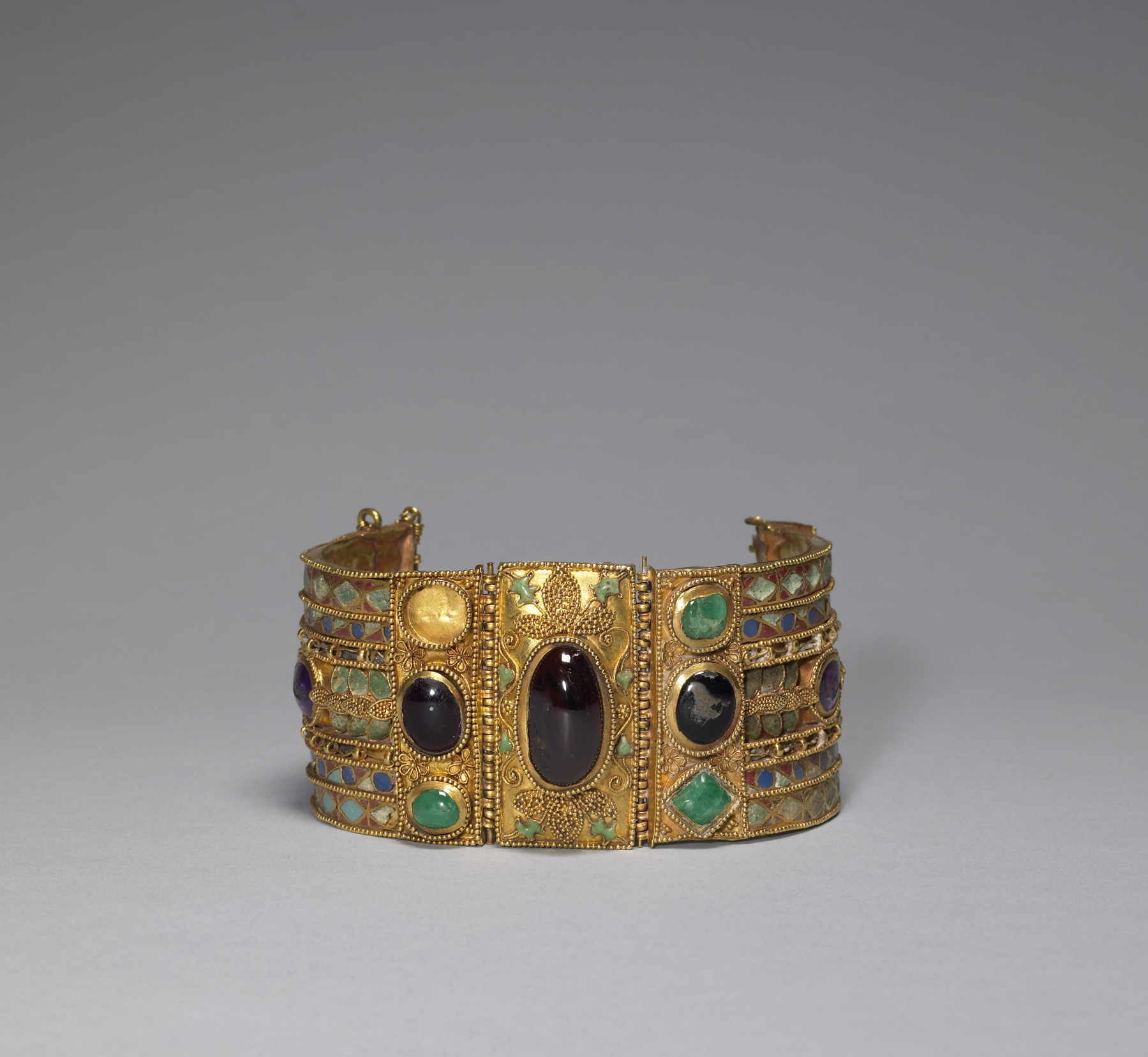Bracelets from the Olbia Treasure
(Ancient Greece , Jewelry)
This outstanding example of jewelry from the 1st-century BCE Greek colonies in the Black Sea region is purported to belong to the famed Olbia treasure, named for the town in present-day Ukraine in which it was discovered at the end of the 19th century. Whether the bracelets, necklaces, earrings, dress ornaments, and other items in the Walters' collection really came from the same tomb remains unclear.
These impressive bracelets have a centerpiece linked by hinges to the two arms. Each bracelet can be closed with a pin that runs through intertwining hoops. The lavish embellishment includes granulation, cloisonné work, and beading as well as multicolored enamel and gemstone inlays in various settings. Using multiple colors and sizes of gemstones became common in Greek jewelry making after the conquest of the East by Alexander the Great (356-323 BCE), which opened up new trade routes and introduced the Greeks to Oriental styles.
Provenance
Provenance (from the French provenir, 'to come from/forth') is the chronology of the ownership, custody, or location of a historical object. Learn more about provenance at the Walters.
[From a tomb near Olbia, Parutino, Ukraine (?), discovered 1913]; F. L. van Gans, Frankfurt (?) [date and mode of acquisition unknown]; P. Mavrogordato, [date and mode of acquisition unknown]; Galerie Bachstitz, The Hague [catalogue 1921, part II, lot 92 A]; Henry Walters, Baltimore, 1926, by purchase; Walters Art Museum, 1931, by bequest.
Measurements
2 1/16 x 3 1/8 in. (5.3 x 7.9 cm)
Credit Line
Acquired by Henry Walters, 1926
Location in Museum
Accession Number
In libraries, galleries, museums, and archives, an accession number is a unique identifier assigned to each object in the collection.
In libraries, galleries, museums, and archives, an accession number is a unique identifier assigned to each object in the collection.
VO.59 (57.375, 57.376)






